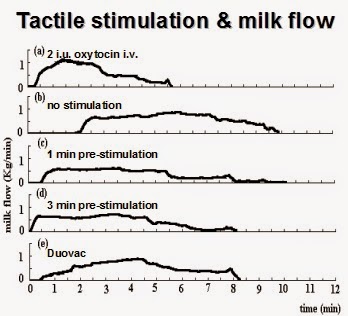Milk flow in buffaloes in response to different
stimulations.
The results of a short study conducted to optimise milking routines in buffaloes with respect to
milk ejection, milk flow and milking efficiency 24 buffaloes in four groups
were studies. Milk yield, stripping yield, milking time and milk flow during
machine milking was measured. Five different milking routines were used viz: (a)
Intravenous injection of oxytocin, (b) direct machine milking (no
pre-stimulation), (c)1 min manual pre-stimulation, (d) 3 min manual
pre-stimulation, (e) Double vacuum milking with reduced vacuum during early
milking (Duovac®),. The following were some of the observations from this
study:
1.
Although milklodown is immediate with oxytocin injection it
does not effect in complete milk removal.
2.
Machine milking without pre-stimulation could cause a
delayed milk ejection due to stress.
3.
Cisternal milk fraction is not visible in milk flow curves
thus necessitating pre-stimulation
4.
Tactile pre-stimulation of machine milking is more efficient
at low vacuum (Duovac®)
5.
In the low vacuum milking (Duovac®) climbing of cluster and obstruction of milk flow is avoided
6.
Tactile pre-stimulation of liner movement is effective for
stimulating a good milking ejection and subsequent removel in buffaloes.
However
it must be remembered that the Duovac is not a substitute for good manual
pre-milking stimulation routines and cannot be compared to an oxytocin
injection. Buffaloes can be machine milked without the Duovac as well.








